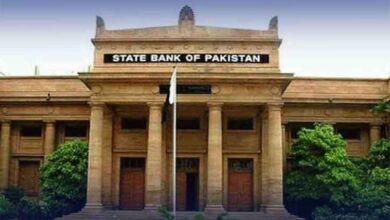KARACHI: The State Bank of Pakistan (SBP) data on Monday revealed that remittances in Pakistan from its overseas citizens skyrocketed to $14.8 billion in the first five months of the financial year 2024-25, a massive 33.6% gain from the previous year.
The national economic recuperation patronised by the International Monetary Fund (IMF) loans, a stable local currency, incentives extended by money exchangers and banks as well as boost in the skilled Pakistani workers’ emigration helped in growth of the remittance influx. As per the data, close to one million skilled workers went abroad in the last three years.
Overseas Pakistanis remitted around $2.9 billion in November — an increase of 29.1% year-over-year. Nevertheless, these remittances slashed by 5% month-on-month. The monetary inflows have averaged $2.9 billion per month as yet.
The State Bank of Pakistan’s incentives and policies that have decreased illegal foreign exchange trading are the main causes of the increase in official remittance flows. Moreover, as global inflation declines, more money is being sent home by Pakistani migrants.
“On a year-on-year basis, remittances continue to record a healthy rise, driven by stable rupee parity, contained hawala and hundi activity, and incentives for banks and money exchangers,” said Awais Ashraf, the director research at AKD Securities Limited.
“Additionally, increased emigration over the past two years has played a significant role in maintaining remittance inflows at around USD 3 billion. Stable inflows from the UAE also reflect strict foreign exchange controls at the country’s exit points.
“In the past eight years, there has been only one instance of remittances increasing sequentially in November. This occurred in November 2020, when remittances rose by 2.4 % month-on-month, driven by a sustained recovery following a sharp decline in inflows during August 2020,” Ashraf noted.
Remittances from the diaspora are a crucial source of external financing for Pakistan. They help enhance foreign exchange reserves and support the balance of payments. During the first four months of the fiscal year 2025, the current account recorded a surplus of $218 million, a significant improvement compared to a deficit of $1.528 billion in the same period the previous year. As of November, the foreign exchange reserves held by the central bank stood at $12 billion — sufficient to cover more than two months of imports.
Both the SBP and the government expect remittances to hit a record $35 billion in FY25. However, analysts worry about the political uncertainty that still exists while weighing the economic effects if the Pakistan Tehreek-e-Insaf (PTI) starts a civil disobedience campaign and asks Pakistanis living abroad to curtail their remittances to their home country.
Remittances, which generate over $30 billion a year, may decline as a result of these calls, according to some analysts, since they may persuade people to utilise unofficial channels like hawala rather than official banking systems.
Ibrahim Amin, a banking and financial analyst, said political instability and calls for civil disobedience can erode confidence among expatriates, potentially leading to a decline in remittance inflows. Historical data indicates that during periods of political unrest, remittances have shown resilience; however, prolonged instability may alter this trend.
Such disruptions can derail economic plans, especially those tied to international commitments like the IMF programmes. Therefore, maintaining political stability is crucial for the successful implementation of economic strategies and sustaining confidence among overseas Pakistanis contributing through remittances, he added.
However, since people send this money to support their families and some of these flows are freelancing earnings, some analysts do not think that possible civil disobedience will have a big influence on remittance flows.







